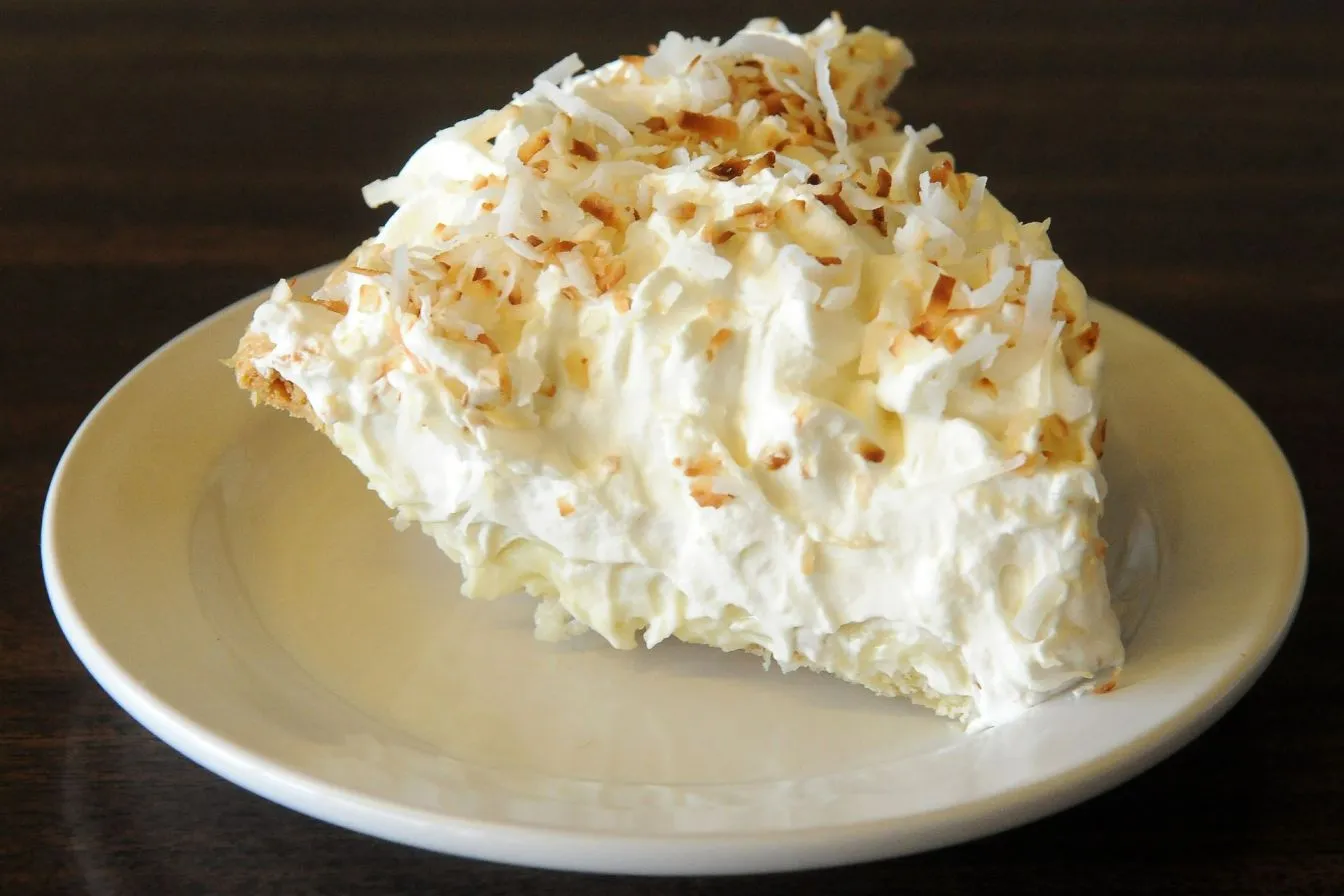Introduction
Coconut cream pie, a delightful dessert cherished for its rich and tropical flavors, has been a favorite at dinner tables and bakeries alike. In this article, we’ll delve into the delicious layers that make up this classic treat, exploring its history, health benefits, and providing expert tips for a perfect homemade creation.
Exploring the Ingredients
The Essence of Coconut Cream Pie
-
Coconut in Tropical Traditions:
- Coconut has been a staple in the diets of tropical regions for centuries. Its versatility in both sweet and savory dishes made it an essential ingredient in the culinary traditions of Southeast Asia, India, and the Pacific Islands.
-
Colonial Influence:
- As trade routes expanded and explorers ventured across the seas, coconut-based recipes began to find their way into European kitchens. The colonial era witnessed the exchange of culinary ideas, and coconut, with its exotic allure, became a sought-after ingredient.
-
Pie Evolution in the United States:
- Coconut cream pie as we know it today has strong roots in American culinary history. Coconut custard pies were likely inspired by similar pies from England and other European countries. The addition of coconut cream, a rich and velvety component, elevated the traditional custard pie to new heights.
-
Key Ingredients’ Introduction:
- The 19th and early 20th centuries saw the rise of convenience foods, and canned coconut milk or cream became more widely available. This accessibility contributed to the popularity of coconut cream pies, making it easier for home cooks to incorporate the rich coconut flavor into their desserts.
-
Mid-Century Popularity:
- Coconut cream pie gained significant popularity in mid-century America. Its inclusion in cookbooks and menus of diners and family restaurants contributed to its status as a classic comfort dessert.
-
Variations and Creativity:
- Over the years, bakers and home cooks have added their own twists to the classic coconut cream pie. Some variations include toasted coconut, chocolate layers, or even tropical fruit additions, showcasing the dessert’s adaptability and versatility.
-
Cultural Influences:
- With the increasing appreciation for diverse cuisines, coconut cream pie has continued to evolve. Chefs and home cooks alike draw inspiration from global flavors, incorporating ingredients such as pandan, lime, or passion fruit to create unique and innovative versions of the classic pie.
Today, coconut cream pie remains a nostalgic and comforting dessert, enjoyed in homes, bakeries, and restaurants around the world. Its rich history reflects the interconnectedness of culinary traditions and the enduring appeal of a dessert that beautifully captures the essence of coconut in every velvety bite.
Health Benefits
Vegan and Dairy-Free Options
FAQs About Coconut Cream Pie
1: Can I use coconut cream instead of coconut milk?
Absolutely! While coconut milk adds a lighter touch, coconut cream intensifies the richness. Adjust according to your preference.
2: Can I make it without eggs?
Certainly! There are eggless recipes available. Consider substitutes like cornstarch or tofu for a vegan-friendly version.
3: How do I prevent a soggy crust?
Pre-bake the crust slightly before adding the filling. This creates a barrier, keeping the crust crisp and delightful.
4: Can I freeze coconut cream pie?
Indeed! Ensure it’s wrapped well to preserve the flavors. Thaw in the refrigerator for the best results.
5: What variations can I try?
Experiment with toasted coconut, chocolate drizzles, or even a hint of citrus for a unique twist on this classic dessert.
6: How long does it take to make coconut cream pie?
Preparation usually takes around 20 minutes, with an additional 25-30 minutes for baking. Allow cooling time before serving.
Conclusion
As you venture into the realm of What is coconut cream pie made of? armed with these insights and a desire for culinary excellence, you are well-equipped to create a dessert that not only satiates your sweet tooth but leaves a lasting impression on anyone lucky enough to savor it.
